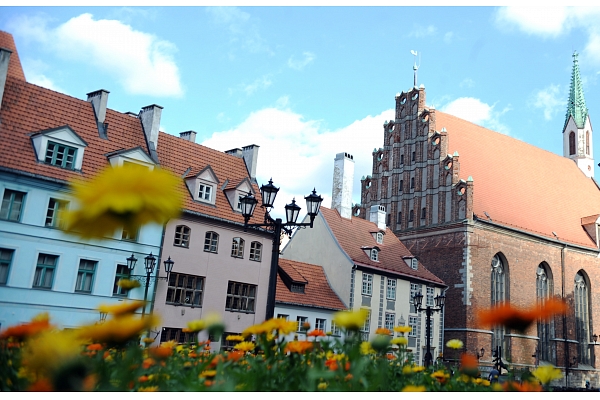Economics Minister Arvils Ašeradens’ address to Baltic Export publication
Latvia has achieved remarkable economic progress in dealing with the impact of the global financial crisis. Macroeconomic disproportions have been significantly reduced, Latvia’s current account deficit and public finances are stable, and its government debt is among the lowest in the European Union (EU). Economic growth has resumed since late 2010 and the situation in the labor market has been gradually improving as well.
Export has been the driving force of Latvia’s economic growth. A favorable external situation and competitiveness of costs, which has been regained thanks to internal devaluation, has been promoting the growth of the tradable sector and manufacturing, our main export industry, in particular. Growth has also been recorded in other export-oriented sectors - agriculture, forestry and transport.
From 2010 to 2015, Latvian export volumes grew by 30%, surpassing the pre-crisis level by 25% in 2015. During the first years of the economic recovery, the growth of export of goods was driven by steady external demand and Latvian companies’ competitiveness which had improved as labor costs fell during the years of the economic slump. Since 2012, however, as economic growth in Latvia’s key export partners in the EU weakened, external demand has significantly decreased and export growth has largely depended on factors of competitiveness. In recent years, though, the role of the factors of competitiveness has been gradually decreasing with export growth almost entirely ensured by external demand.
The diversification of Latvian export of goods has increased. During the years of fast economic growth, exports were dominated by a few large groups of export goods like timber and its products, as well as metals. During the crisis, export volumes declined in all groups of goods, but exports of the largest groups of export goods fell at the steepest rate, which led to improved diversification. After economic growth resumed, export growth has been fairly even across all groups of export goods, which is an indication of a high degree of diversification. It is noteworthy that in recent years this indicator in Latvia has been consistent with the EU-15 average.
Food and agricultural produce, timber and its products, machinery, mechanical tools, electrical equipment, chemical and related industry products still make up a significant share of Latvian export of goods. Although the share of high-tech products in Latvian export of goods is small as compared to other EU member states and the EU average, it has been showing a tendency to increase and has nearly doubled from 2007.
In recent years, Latvian export of services has made up around 28% of total export of goods and services. Transportation-related services make up 40% of all services exports. Over the past three years, the share of revenues generated from tourists visiting Latvia has been growing in Latvia’s overall services export. In 2015, their share in export grew to 20%. Export of financial services has also increased, reaching 15% in 2015.
Traditionally, EU member states have been Latvia’s largest export partners, receiving more than 70% of all Latvian exports. Export to Lithuania and Estonia account for more than 30% of Latvian export of goods. Due to the food import restrictions imposed by Russia, Latvian export volumes to CIS countries have shrunk since 2014. Furthermore, export to these countries was also significantly affected by the region’s economic crisis and a fast drop of currency exchange rates.
In the coming years, export dynamics are likely to remain moderate, largely due to a weak growth of the global economy. The main risks to the world’s economic growth include deflation, strong fluctuations of currency exchange rates, and dropping oil prices, which bring losses to oil exporting countries but benefits to oil importers.
Until now, Latvia has been improving its competitiveness largely thanks to lower labor costs. Since keeping the labor costs low amid free movement of labor force will be impossible in the long run, productivity will have to be increased to expand manufacturing and Latvia’s share of export markets. Productivity growth is the key precondition for sustainable and balanced economic growth. Raising productivity, meanwhile, depends not only on technological innovation and enhanced management of the production process but also on redistribution of the existing resources for making products with higher added value.
In order to promote further export growth, it is essential to enhance companies’ competitiveness, increase productivity and strengthen innovation capacity, as well as to make targeted investments in human capital. To strengthen innovation capacity, EUR 430 million of EU structural funding have been made available to entrepreneurs until 2020, and there are also plans to strengthen business clusters and to significantly enhance the creation of innovative businesses and the start-up ecosystem. Also available to entrepreneurs is the Latvian Investment and Development Agency’s support for export promotion and the network of Latvia’s External Economic Representations in 20 countries of the world. Work is also ongoing to ensure the availability of financial instruments and export loan guarantees.
The issue of Latvia’s economic growth has to be tackled together with competition boosting issues, which in turn cannot be done without changing the existing economic model. When creating a new knowledge and innovation-based economic model, especial attention has to be paid to the quality of infrastructure and the institutional environment, increasing the level of business sophistication, development of clusters and boosting the potential of innovation.
In order to ensure economic growth in 2017, it is essential to continue systematic work on the implementation of the goals defined in the government declaration. Stimulation of export and investment, productivity growth and development of human capital are the key factors on which work has to be continued to ensure Latvia’s further economic growth - a GDP growth of at least 3% this year. In the future, the competitive advantages of Latvia and its entrepreneurs will depend on their ability to make use of cutting-edge technology, develop innovation and new products.
As we move towards the model of a 21st century economy, we need to set new, challenging goals. The Economics Ministry has therefore based its work schedule for this year on three pillars - enhancing the business environment, attracting knowledge and highly-qualified labor force and good management of investment projects.





